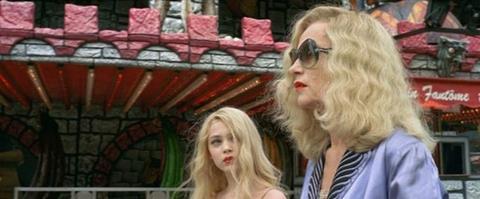Dir: Eva Ionesco. France. 2011. 105mins

Painful personal experience is distilled into poignant drama in Eva Ionesco’s promising first feature My Little Princess. Autobiographical events from the 1970s are shaped into a fairytale-like narrative illuminating the abusive nature of Ionesco’s relationship with her mother Irina and eternal arguments over the limits of artistic freedom.
Ionesco directs the film with a pensive detachment and never judges the characters.
The notoriety of the Ionesco family history in France allied to the powerful performances of Isabelle Huppert and stunning newcomer Anamaria Vartolomei should gain the film wide attention domestically and there are enough marketable elements to lend it some modest cachet for international arthouse distributors.
In the 1970s, Ionesco’s mother rocked the Paris art world with photographs of her naked, pre-pubescent daughter. Ionesco recalls that the mother began posing her when she was just four. In My Little Princess, Violetta (Vartolomei) is ten when wildly unconventional mother Hanna (Huppert) takes the fun of dressing up in old clothes to a different level. Soon, Hanna has the career and acclaim she has always desired whilst Violetta is both seduced and appalled by her sudden elevation into an adoring adult world.
The core of My Little Princess is the love/hate relationship between mother and daughter who clash so frequently because they seem so alike in temperament. Huppert brings a feverish edge to Hanna suggesting the restlessness of an older woman perhaps only too aware that time and society are not on her side. The character takes her inspiration from the glamour of old Hollywood and in her frizzy blonde hair and lushly coloured gowns, Huppert’s Hanna is like a cross between Jean Harlow and Baby Jane.
Anamaria Vartolomei was only 10 when the film was shot, but brings an astonishing emotional maturity to her character, conveying the conflicting emotions within Violetta and the righteous anger that may have saved her from her mother’s clutches. Violetta has been encouraged to admire the beauty and tenacity of a Marlene Dietrich so it seems entirely plausible that she responds so enthusiastically to dressing and posing in the manner of The Blue Angel.
Her mother’s need for her as a model invests Hanna with a sense of power and self-worth but also steals the innocence of her childhood and removes her from the world of her peers.
As the mother increasingly chooses to sexualise the daughter, Violetta turns into a Lolita figure, standing forlornly in the school playground in tight hot pants, swaggering into the classroom in full make-up and the kind of clothes that could only be deemed inappropriate. Throughout the film costume designer Catherine Baba does a fantastic job of finding clothes and accessories that define the characters and reflect the changes in their lives.
Ionesco directs the film with a pensive detachment and never judges the characters. She shies away from the more experimental sensibility that a director like Todd Haynes or Tom Kalin might have brought to the transgressive material creating a more conventional but also more accessible piece of storytelling. She captures a genuine sense of the affection that permeates these troubled, claustrophobic lives making what happens to them all the more upsetting.
Production company: Les Productions Bagheera
International sales: Urban Distribution International, www.urbandistrib.com
Producer: Francois Marquis
Screenplay: Eva Ionesco, Marc Cholodencko, Philippe Le Guay
Cinematography: Jeanne Lapoirie
Editor: Laurence Briaud
Music: Bertrand Burgalat
Main cast: Isabelle Huppert, Anamaria Vartolomei, Georgetta Leahu, Denis Lavant, Jehtro Cave






















